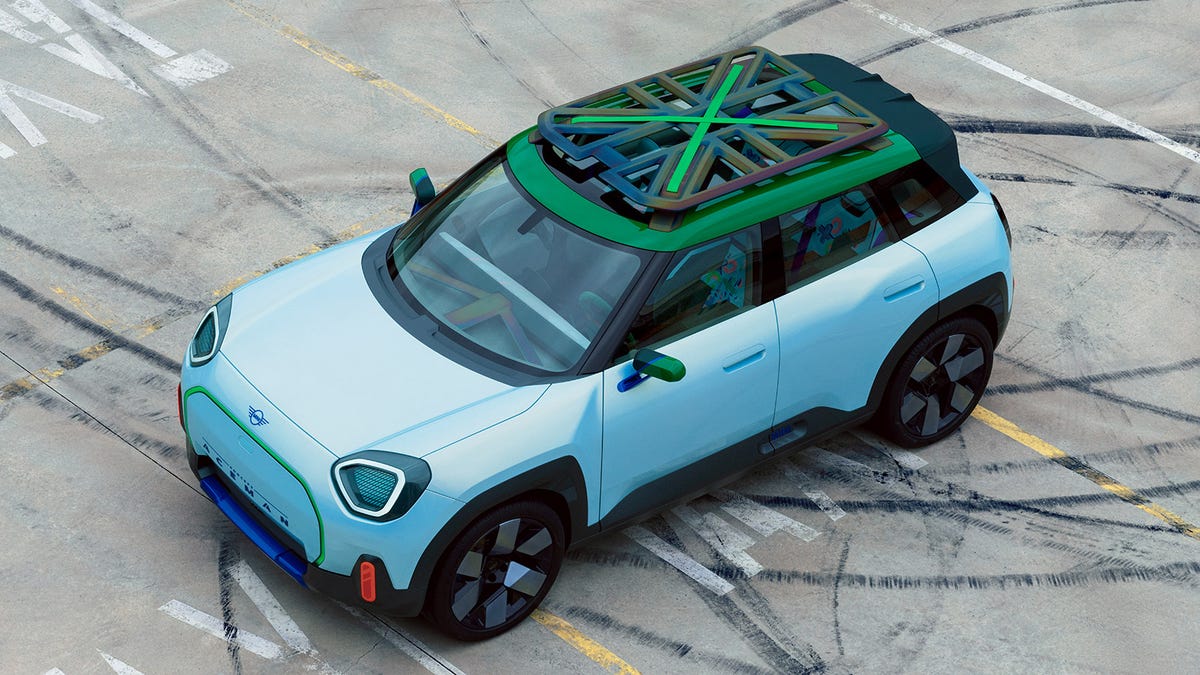The Aceman Concept Teases Mini's First EV That Matters

Image: BMW
Mini has been at this EV thing longer than most would give it credit for, dating back to the limited-run Mini E in 2010. The Mini Cooper SE — or the Mini Electric to our cross-Atlantic friends — was its first volume battery-electric car. But even then, the SE was built on the existing internal-combustion Mini platform, with some tech carried over from the BMW i3. The Aceman concept, unveiled Wednesday, signals a more ambitious future for the brand.
First off, yes — it’s a crossover. Not quite as large as the Countryman, which is about 10 inches longer, though similar in every other dimension, the Aceman looks like a Mini for the EV age. The wheels are pushed out to the absolute fringes of the body, the cladding encircling them is boxy and matte black, and there’s a geometric theme to the haunches and cut lines that builds on what’s come before, but conveys a more futuristic aesthetic.
Image: BMW
The Aceman is pretty handsome, actually, though nonetheless infuriating because it reminds us that BMW Group Design can make smart-looking cars when it feels like it. This is Mini’s “Charismatic Simplicity” language at work, which may as well be marketing speak for “Defender-ish but cute.”
Inside, I can’t really speak to what’s going on with the “knitted, recycled textile” seats. Mini appears to have liquified bins of Tokidoki figures and infused their radioactive essence into the upholstery. Honestly, this is kind of where the Aceman loses me, because it strikes very “how do you do fellow millennials?” I’m poor and can’t afford whatever this costs, thanks for asking.
Image: BMW
At the center of the dash is the classic Mini round display. It’s amusing to think that this used to primarily be a speedometer; it’s now an OLED screen with an infotainment system running on Android. The mix of pastel-toned words and shapes visible on the dashboard actually originate from an overhead projector. Mini seems very proud of this system, devoting multiple paragraphs to how it can be customized in the brand’s own press release, though it’s hard to imagine anything so distracting making it to the eventual production Aceman.
Image: BMW
The big question surrounding the Aceman, and indeed all fully-electric Minis, is range and performance. The Cooper SE’s 115-ish miles on a full charge is simply a non-starter for the vast majority of American drivers, who’d likely expect at least double from an EV. But Minis are what they say on the tin — compact — and solving the range problem with loads of batteries will surely kill the agility the marque is known and loved for.
Image: BMW
Mini will be able to mitigate this with dedicated EV underpinnings, and perhaps a clever shifting of the goalposts; high-riding crossovers are inherently more sluggish than city-hopping hatchbacks, after all. The manufacturer isn’t getting specific about numbers yet, but it has teased up to 400 kilometers — that’s 248 miles — for the next-generation Cooper SE on Europe’s rather generous WLTP emissions testing cycle. That’d be a big improvement, and maybe by the time we see a production Aceman in 2024, Mini will finally figure a compelling option for entry-level EV shoppers.



